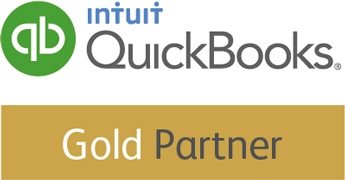Continuing in our series of things our customers have asked us in hushed voices because they thought they should know this, but didn't, and which is FINE because no-one is born understanding finance, plus we love explaining this stuff.
So, the Profit and Loss report - what is it, where do you find it, what does it tell you?
Your Profit and Loss report shows your business transactions, and subtracts your business expenses from your income to show how much of a profit (or loss) you've made.
The big difference between a Profit and Loss report, (which from now on we will call a P&L because everyone does, and it sounds cool, except when they call it an Income Statement which is also fine but not as snappy), and your Balance Sheet, is that a P&L is a report which looks at Income and Expenses over time. As you'll remember from our blog, your Balance Sheet is a snapshot of one day in your business ,the P&L is a really powerful report because it lets you look at the peformance of your business in a specified time frame.
If you're running a Limited Company then you have to produce a Profit and Loss Report for each financial year, but you should be looking at it much more frequently than that - we'd advise you to be looking at your P&L at least for the previous quarter on a monthly basis, most entreprenuerial customers run them on a monthly basis to make sure they are on top of things.
What does the Profit and Loss report show?
The P&L shows the income of your business, less it's running costs over a specified period of time.
If your income is greater than your costs - bonza! Everyone to the pub, you've made a profit.
If your costs are greater than your income - your business has made a loss. Everyone to the pub to come up with brilliant ideas on how to make a profit going forward.
Photo: the 5 reactions to a P&L

What is Income?
Income is the total of your sales (Gross Income) minus any discounts and, if you're VAT registered, minus VAT. This figure is your Net Income (i.e with the VAT element removed).
What are Expenses
Your expenses depend very much on the type of business you are running and Xero breaks this up to include:
- cost of sales - also known as "direct costs", these are things that relate directly to a sale
- expenses - these are the general day to day expenses in running a business.
- overheads - also known as "fixed costs", these are a fixed amount over a period of time.
For example, Lisa is a weaver.
When she weaves an item that has been ordered by a customer she will order in the yarn specifically for that item and so the cost of the yarn will go down as a cost of sale because it's directly related to the item.
Her rent, electricity, insurance and mobile phone bill will go down as overheads, because they don't vary.
Her coffee to keep her going through a day at the loom will go down as an expense.
When do I record income and expenses?
Great question. Income and costs are included in the P&L when they are incurred, not when payment enters or leaves your bank account (unless you're using the simplified cash basis for your accounts). If you are struggling with this, we can help you set up a system that will allow you to see what has been ordered and received and what is still outstanding.
How do I compare P&Ls from different time periods?
You should absolutely be doing this - you could compare the most recent quarter with the previous quarter, for example, or your Christmas period this year with the same period last year. The flexible reporting tools in Xero and QuickBooks online allow you to quickly select which time period you want to look at and you can then compare reports. Play around with the columns and time periods to create the report you want to see, If you need more complex reporting then we can help with that , just get in touch and we can help you tailor your reports and your dashboard so that you're getting exactly the information you want.
Where do I find the Profit and Loss report in Xero?
Click on "Reports" and the "All Reports". There is a subsection called "Financial", in this section there are two reports with the same title of "Profit and Loss". However one has 'New' next to it. We are fans of the old report as it gets you up and running looking at trends on a month by month basis. If you are only going to look at one report then this is it. However, the "New" report has been designed to be more customisable, you can add new columns and compare different periods. So for example you could have current month, qtr to date and yr to date on the same report. This can only be achieved with the "New" report. If you tick the star, it will be set as one of your favourites.
Where do I find the Profit and Loss report in QuickBooks Online?
In the navigation bar, click "Reports". QBO will allow you to run a couple of different P&L reports:
- By Class (Department or function)
- By Location (Geographic)
- By Customer
The first two can be achieved with Xero, using its "Tracking Code" functionality.


